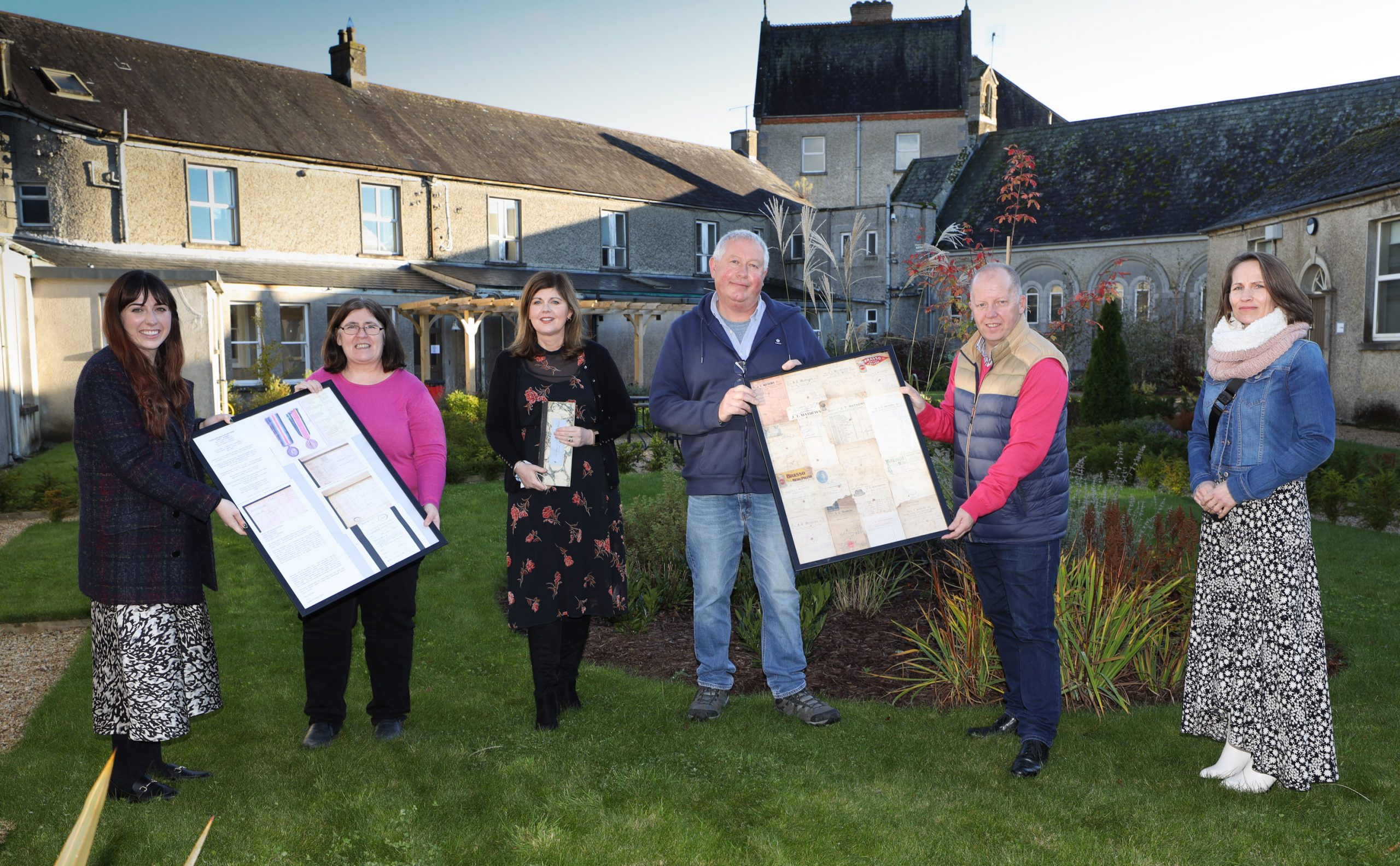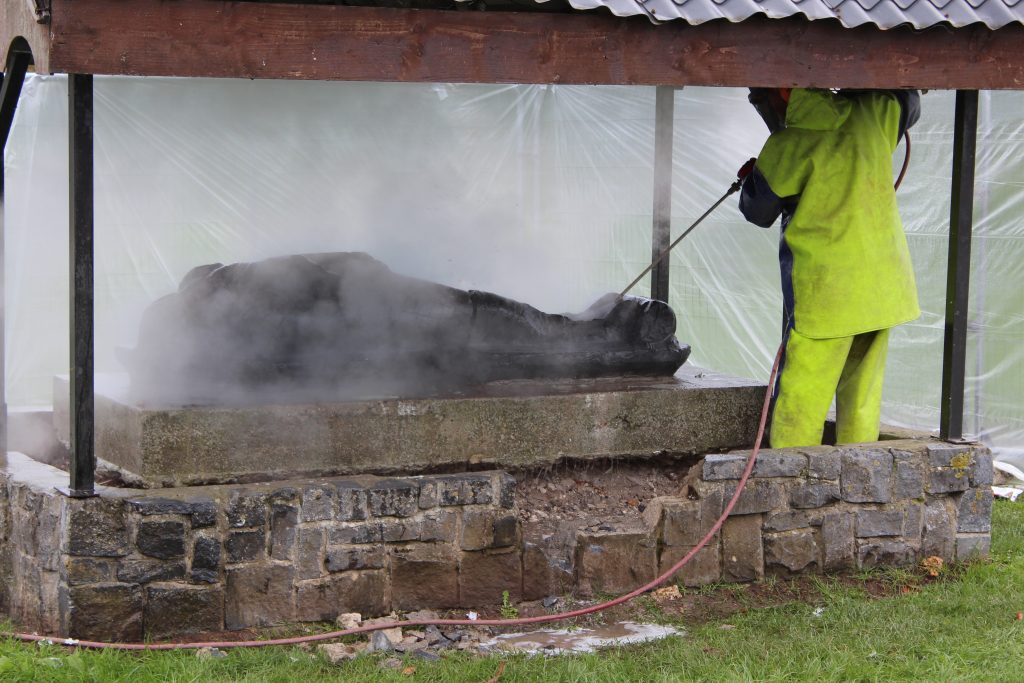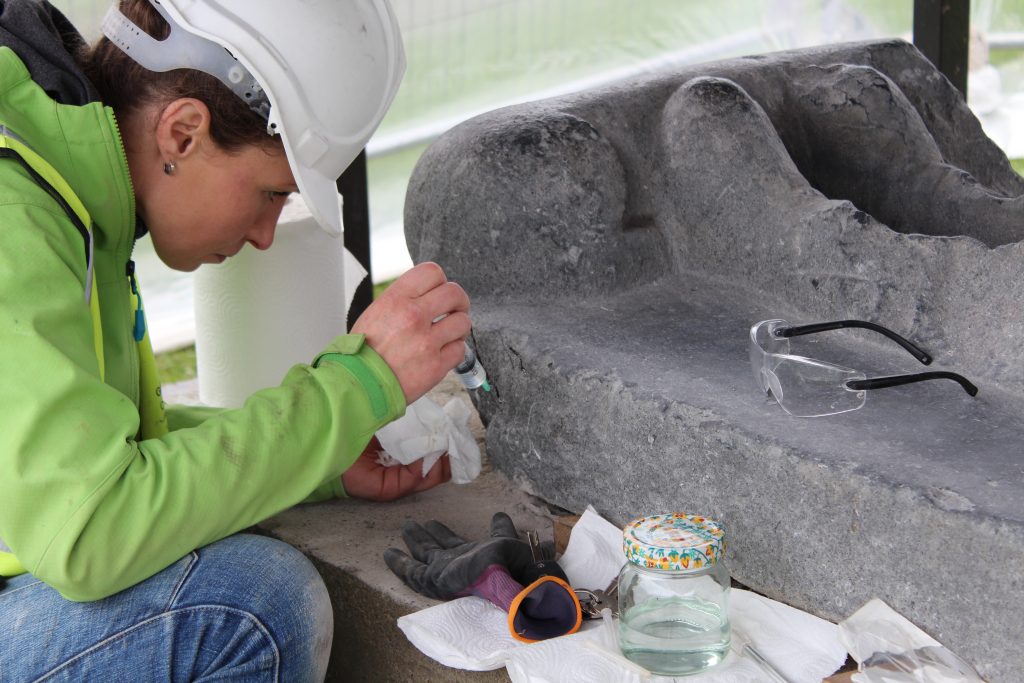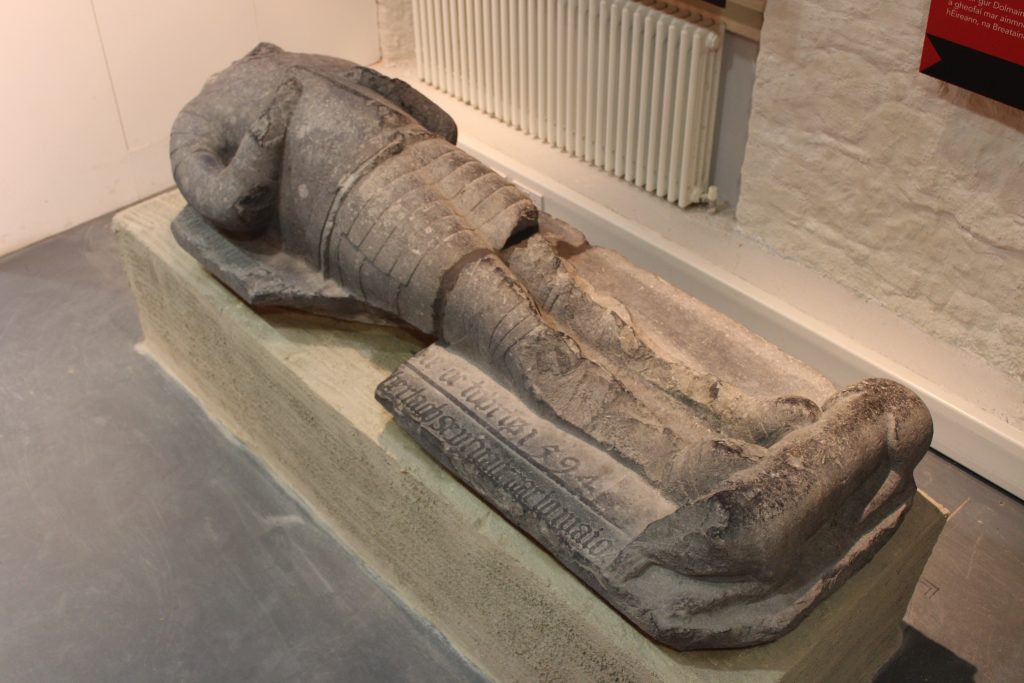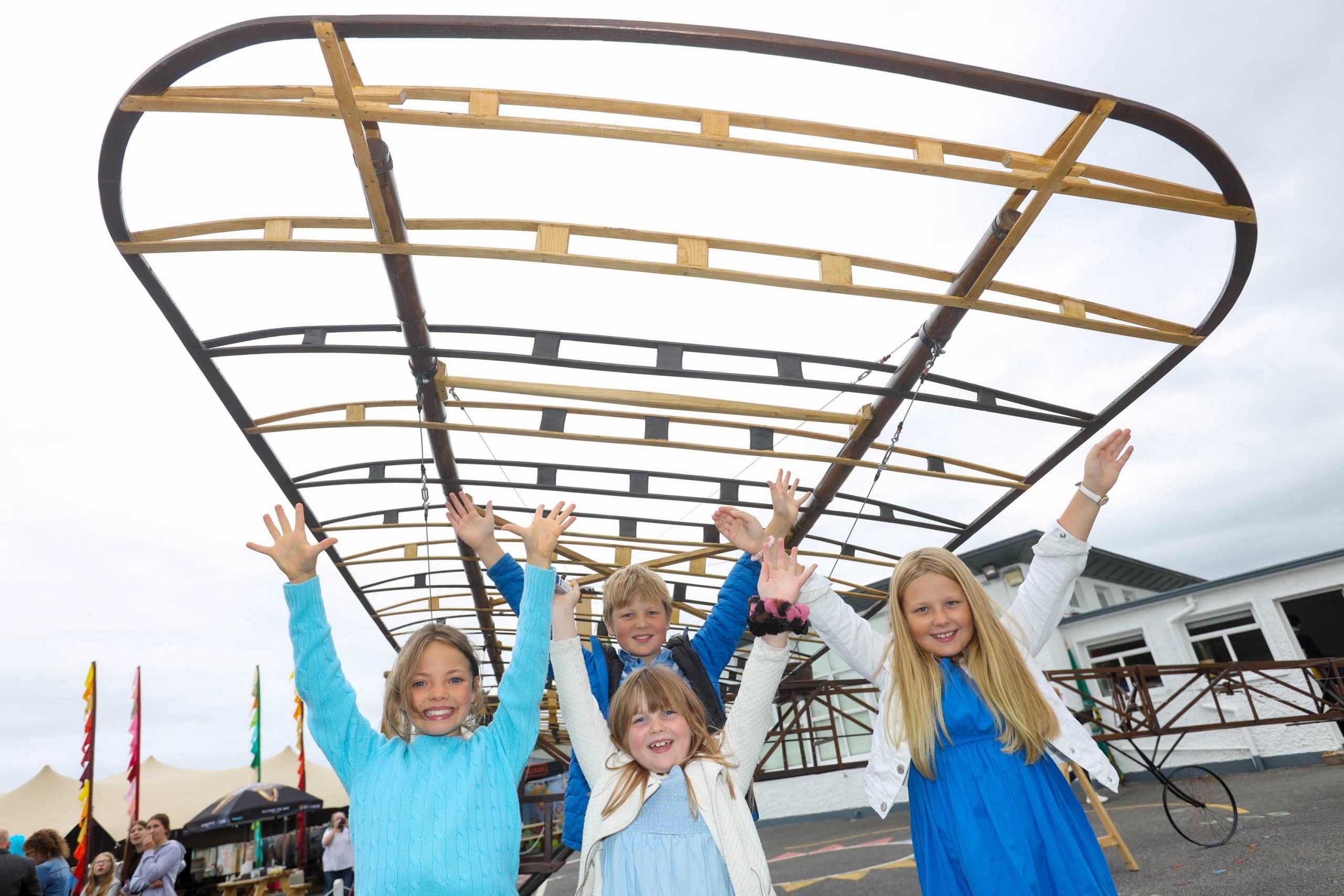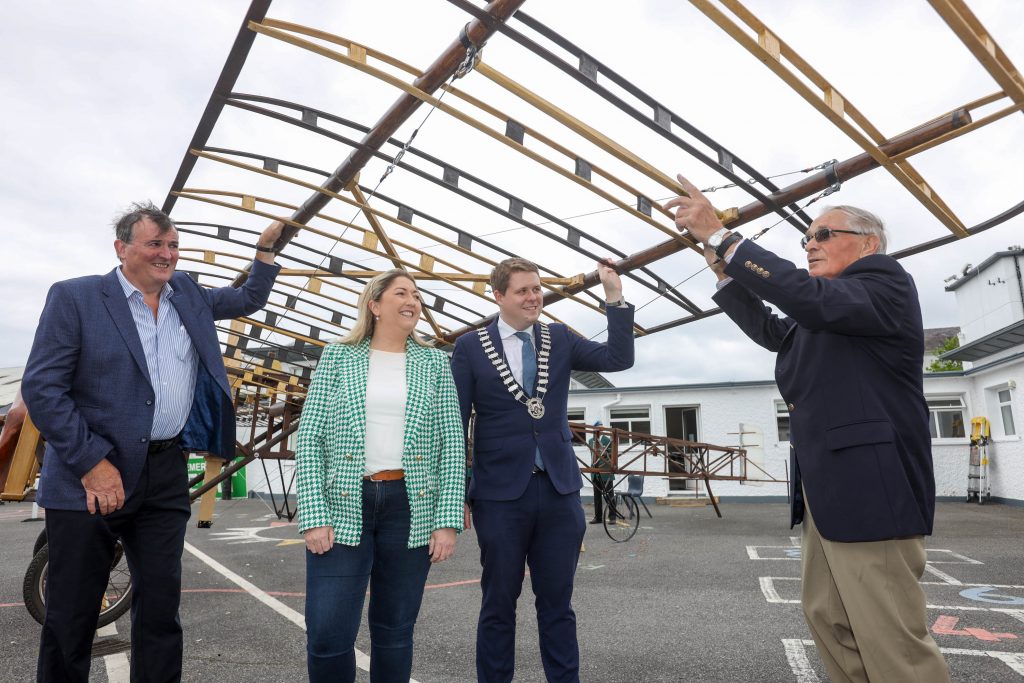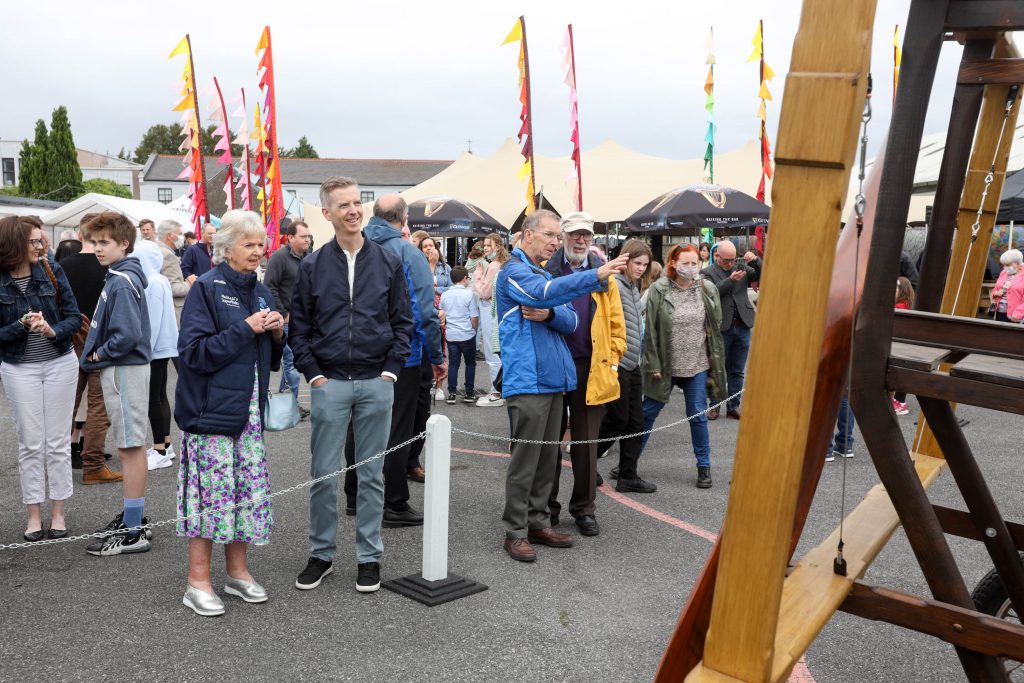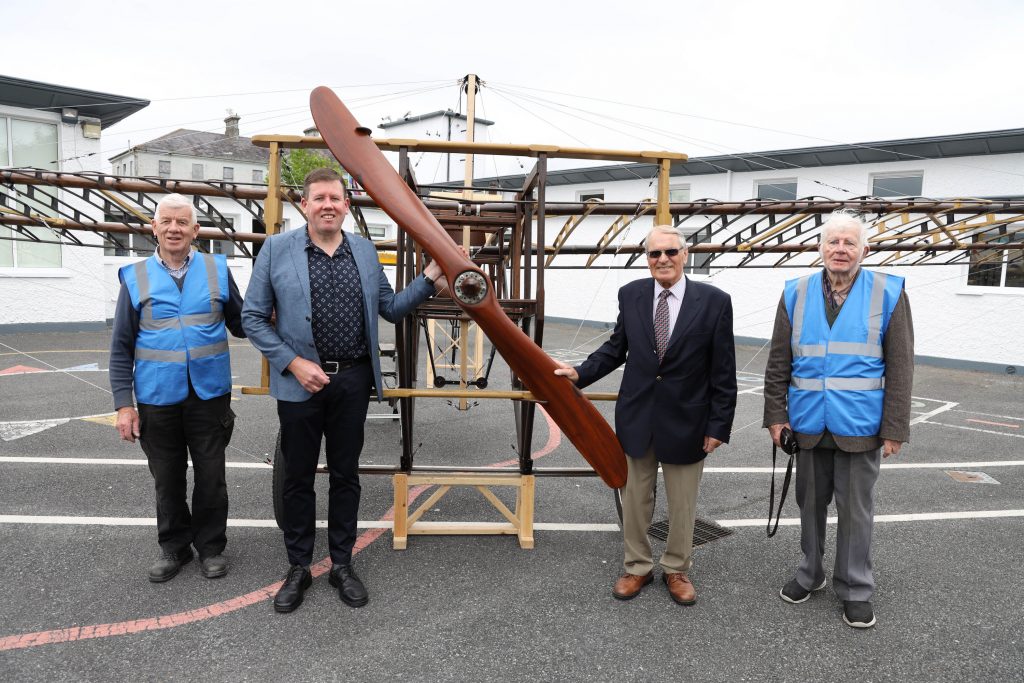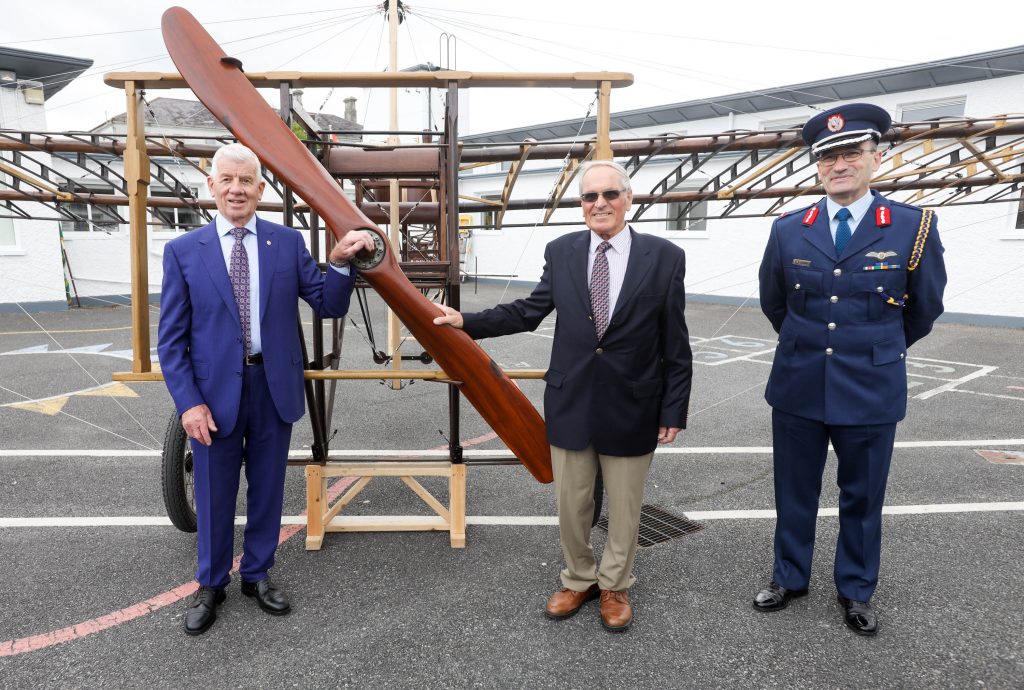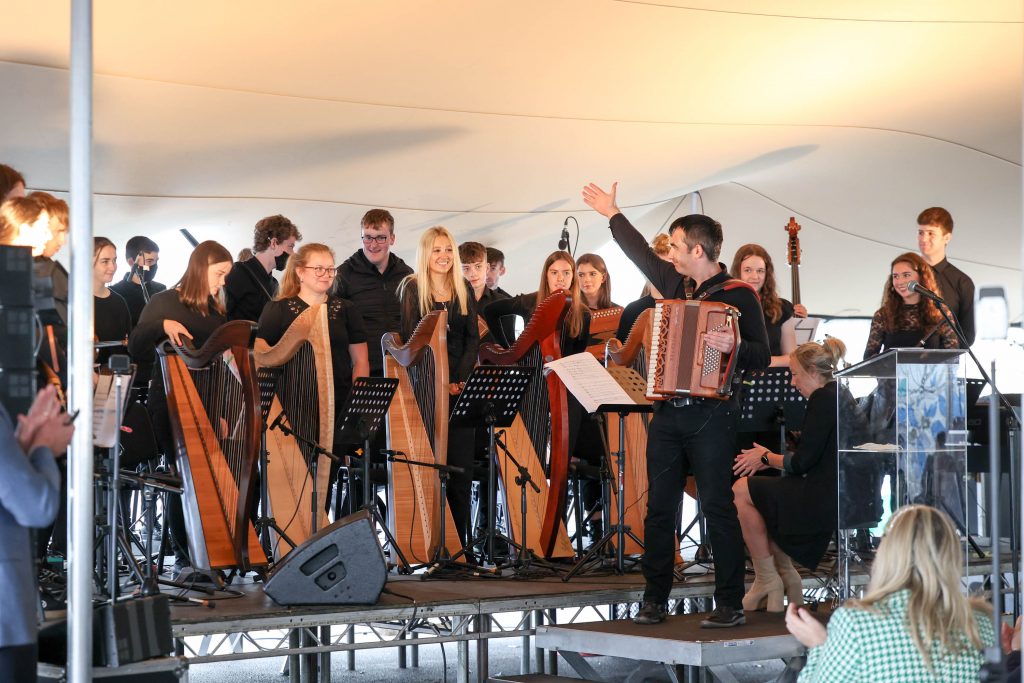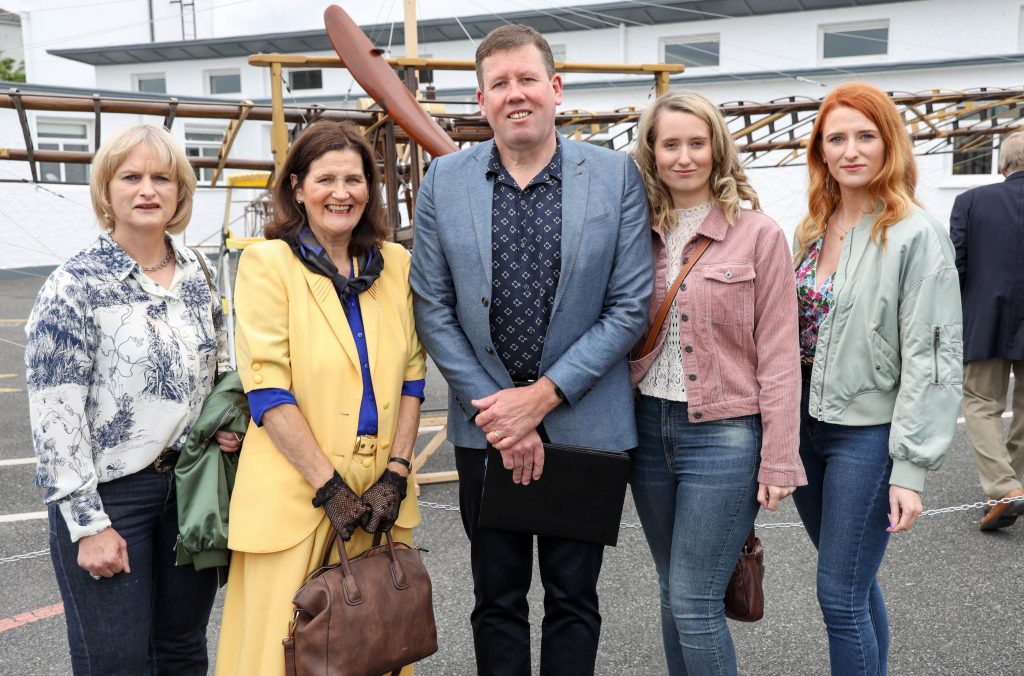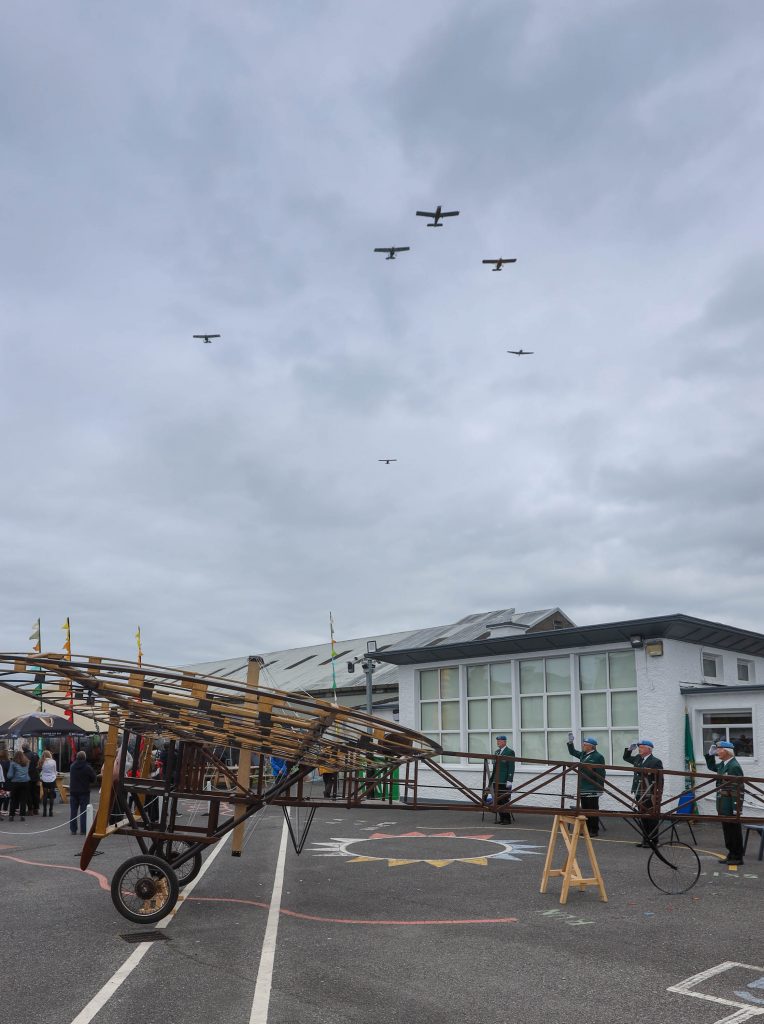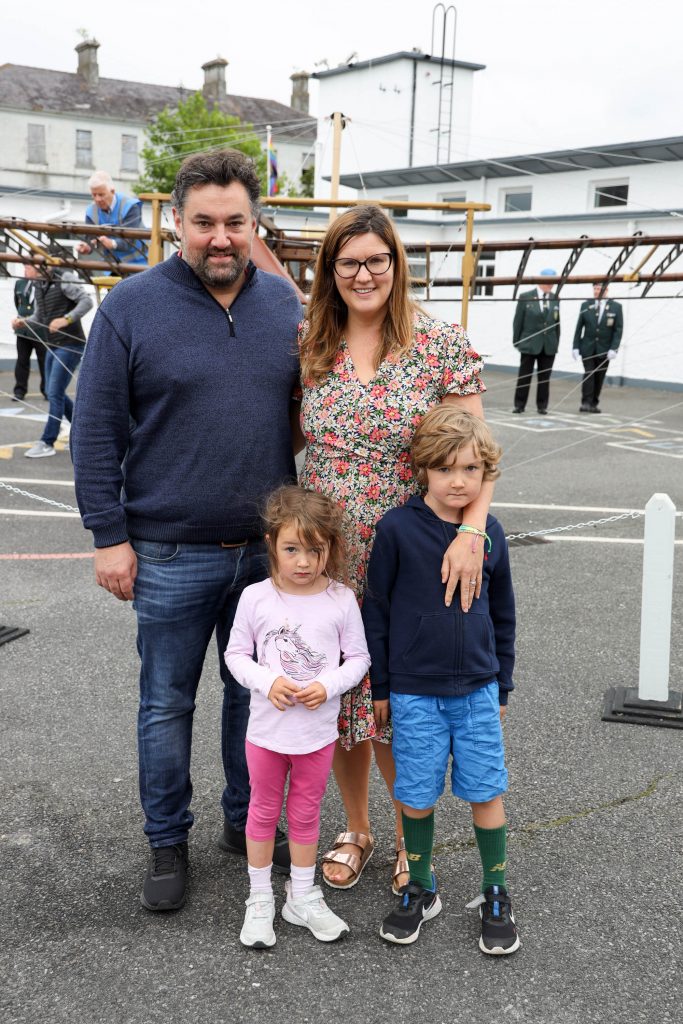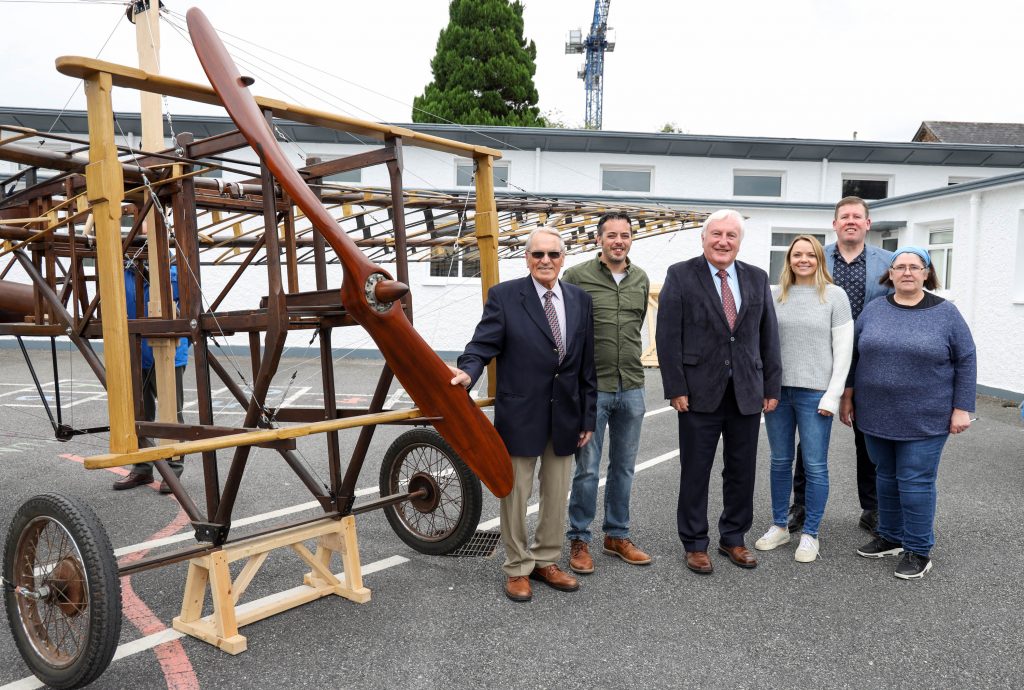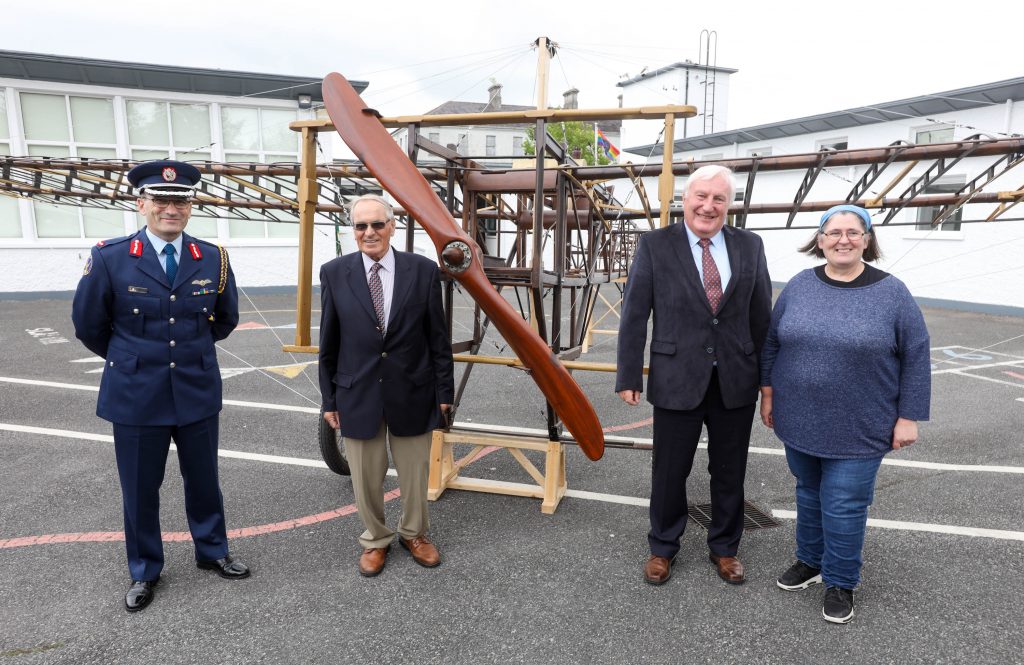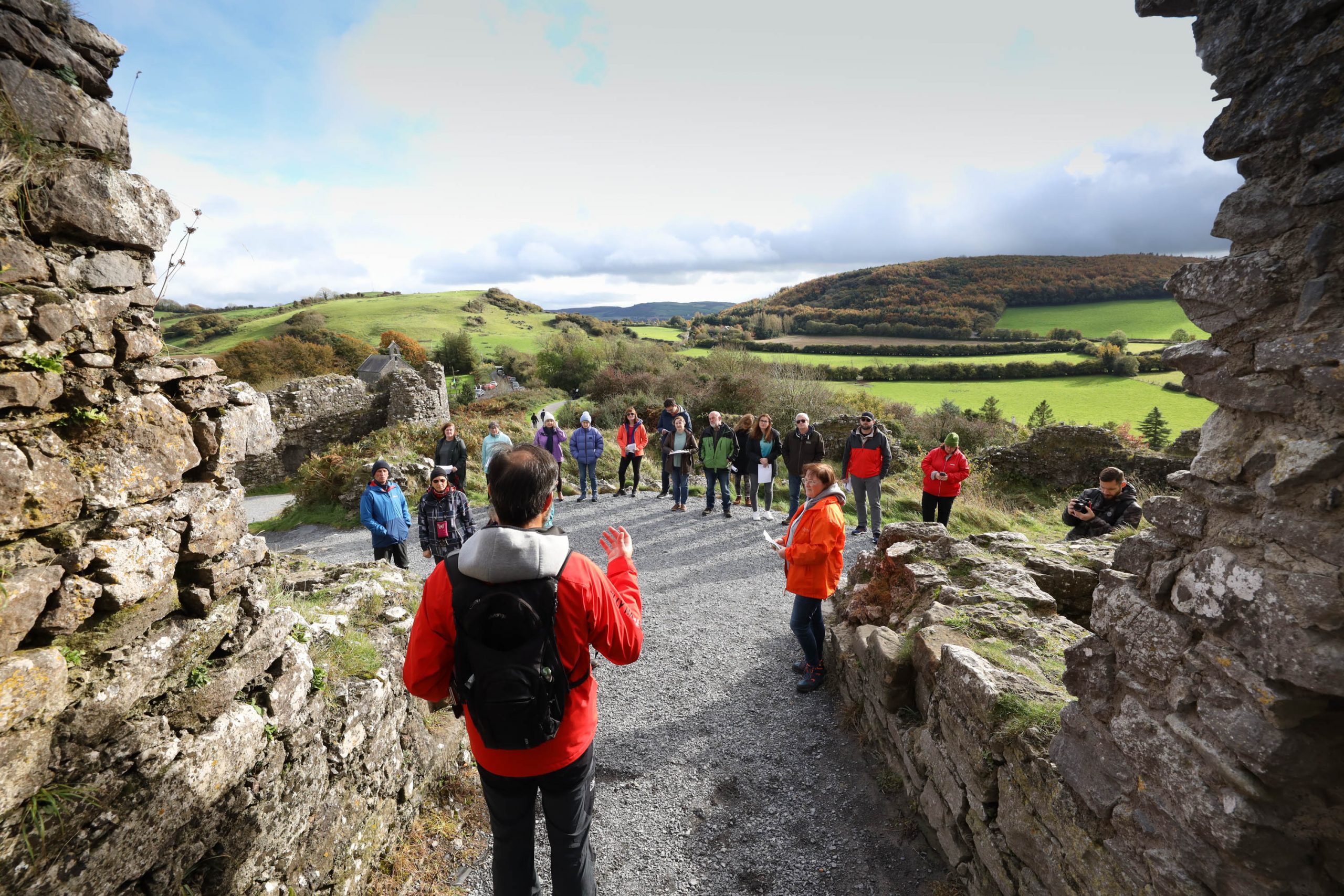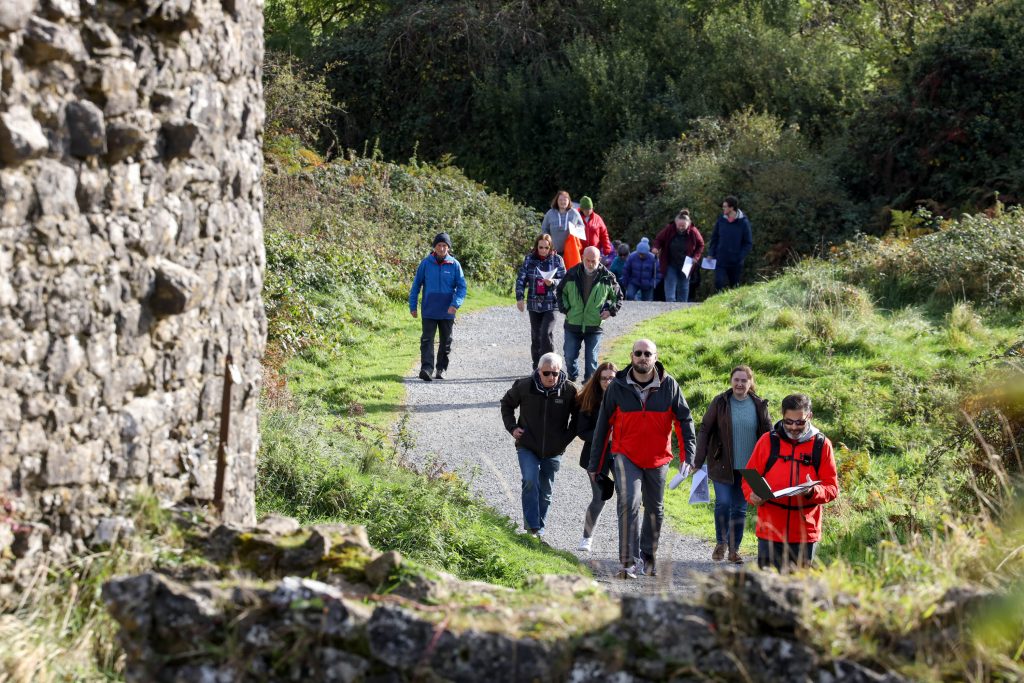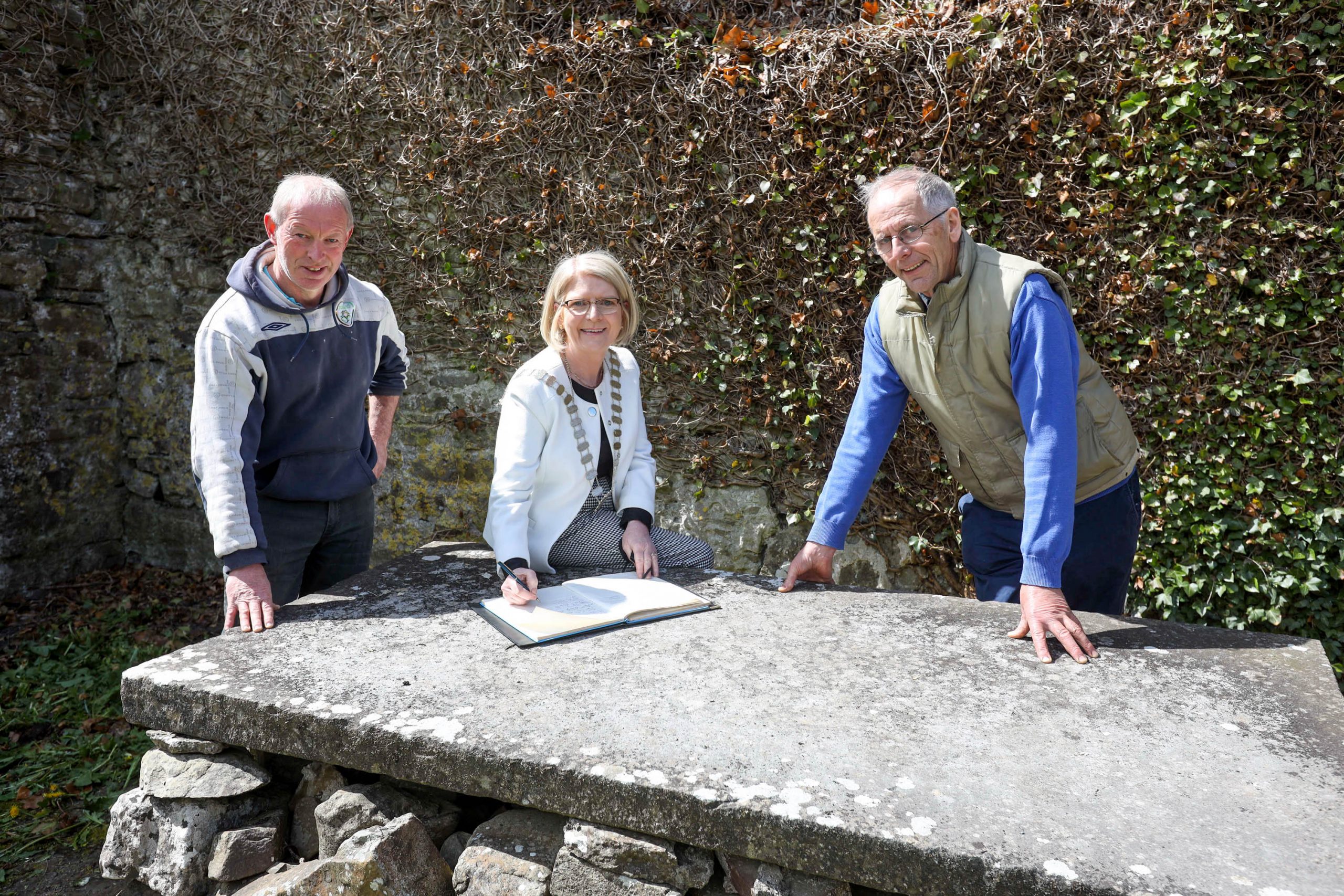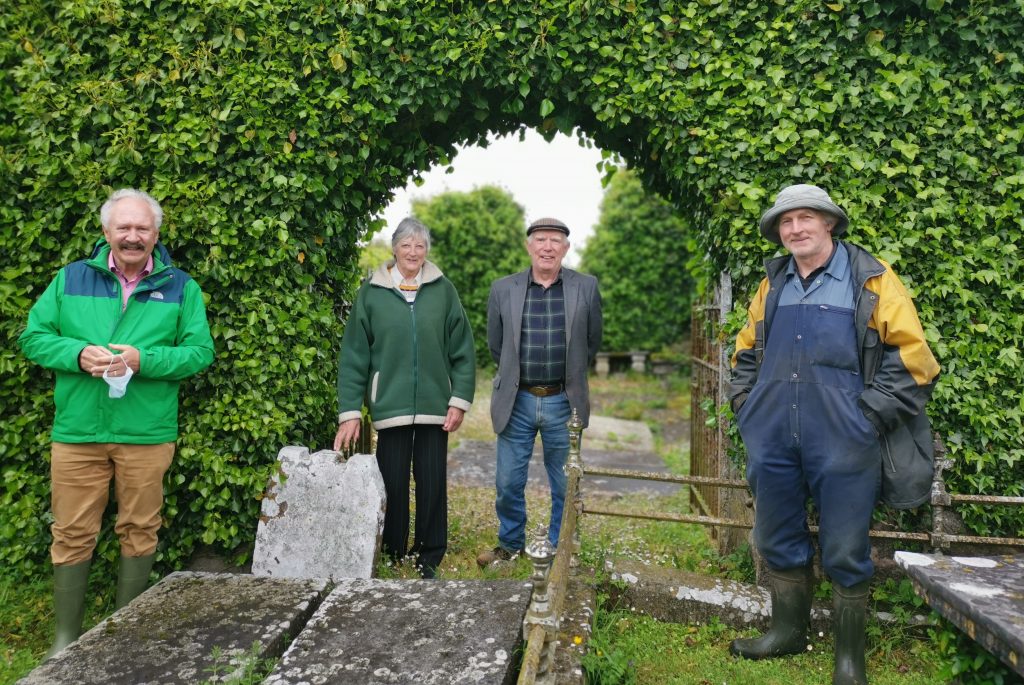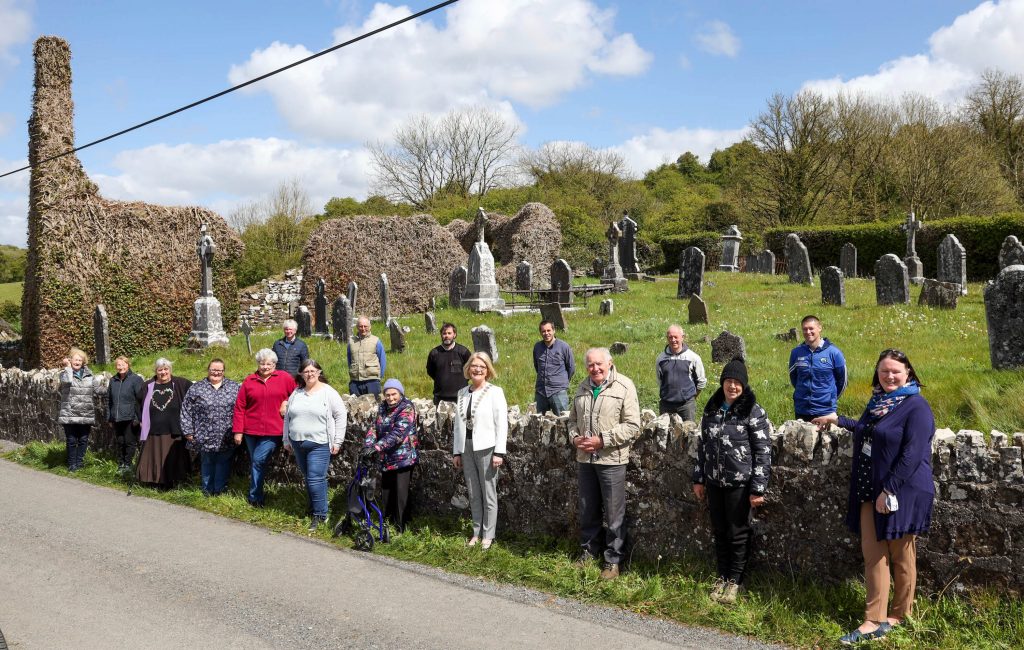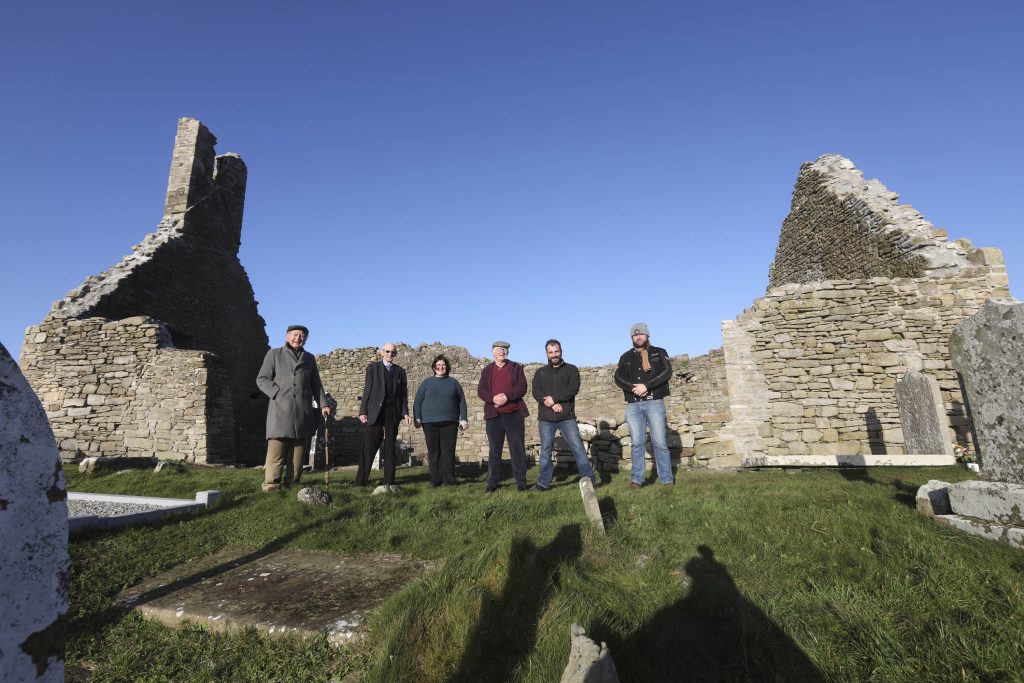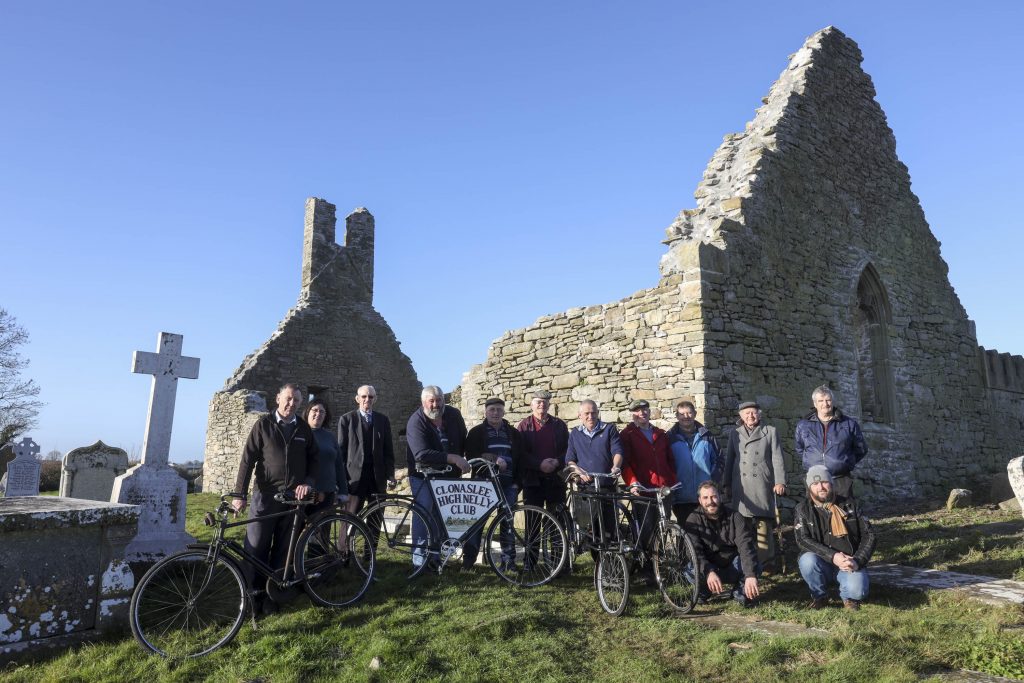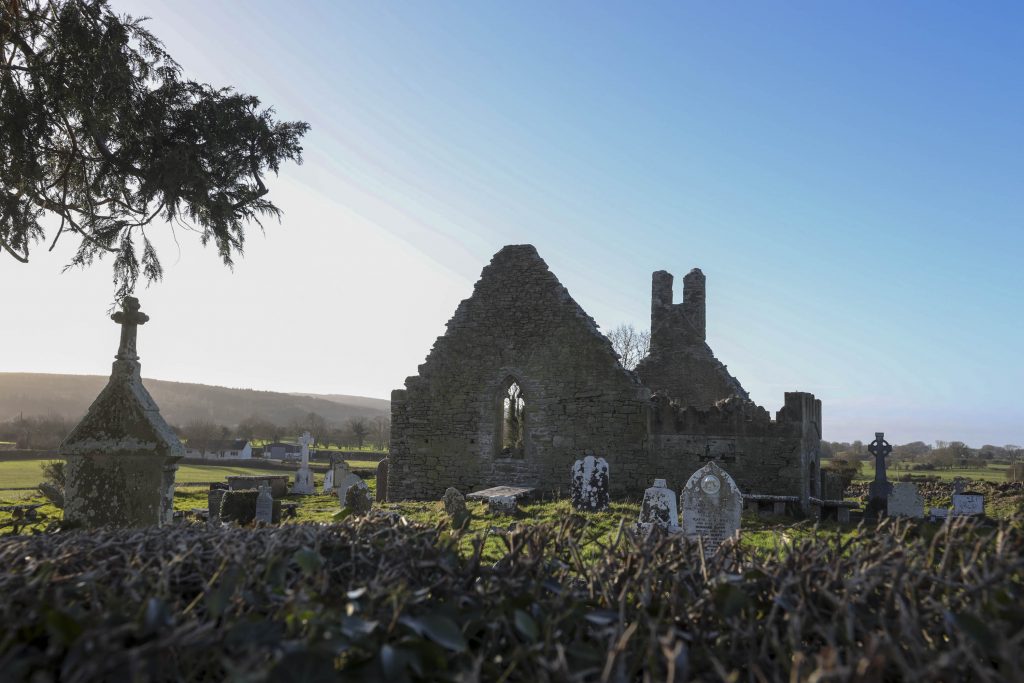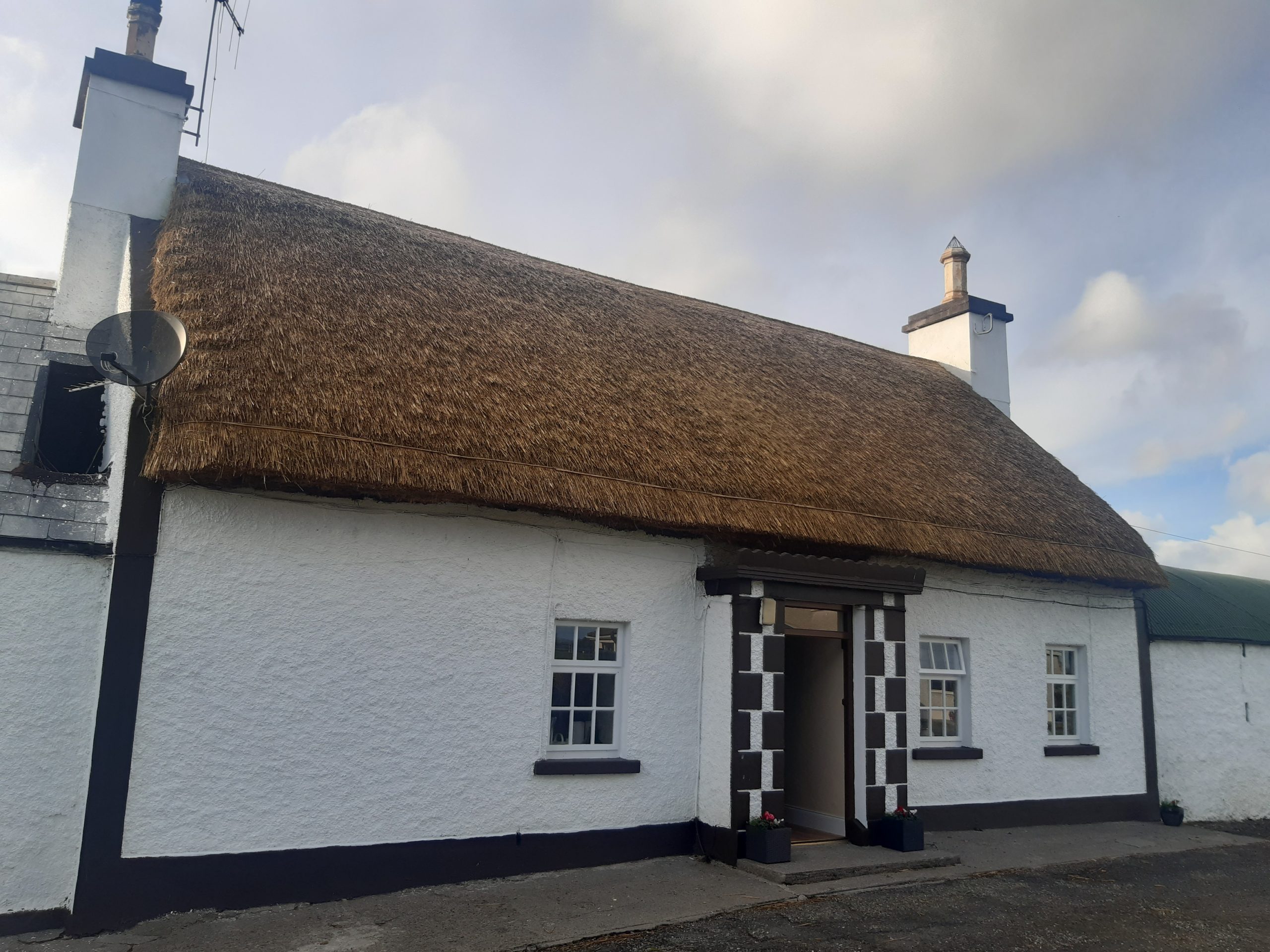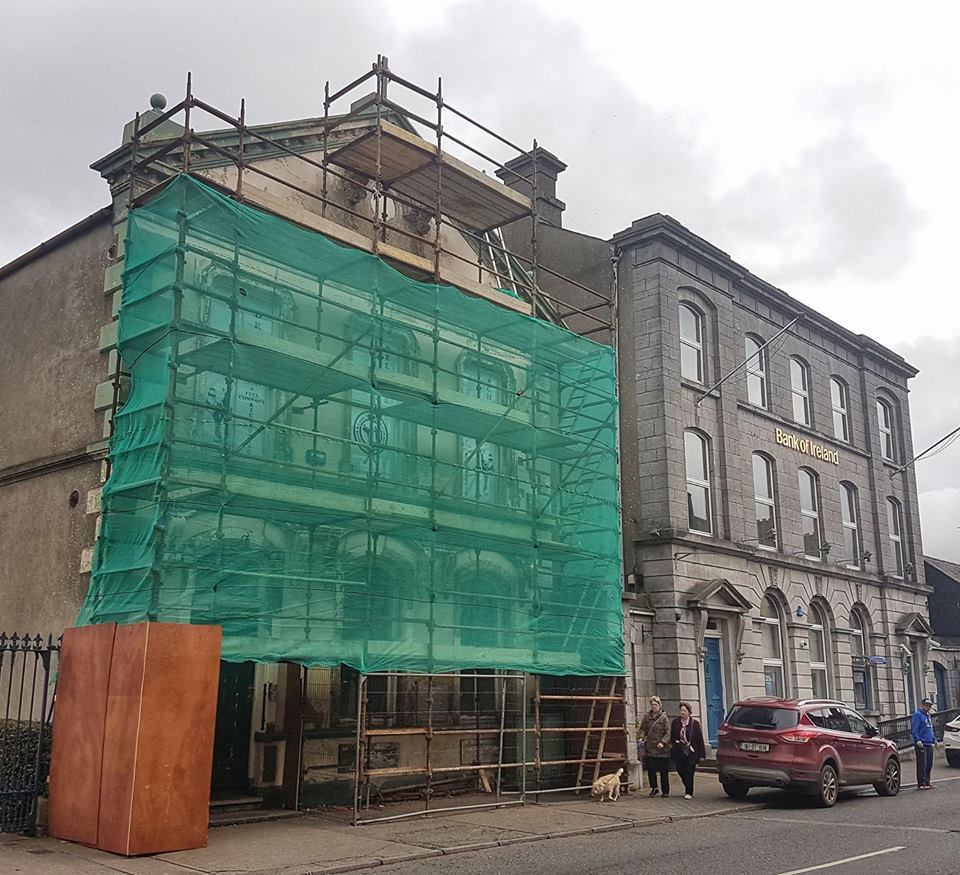Laois County Library Service and Laois Heritage Office are delighted to announce that work is commencing on the Ronnie Mathews Archive Collection. The collection, acquired earlier this year by Laois County Council, was compiled by the late Ronnie Mathews, a well-known and highly respected local historian and author from Portarlington. The collection contains records and artefacts relating to the history of Portarlington and environs including maps, photographs, business records and much more. It reflects the original collector’s knowledge and passion for local history, from the earliest times to recent years.

Picture: Alf Harvey.
With items from the Ronnie Mathews Collection at Bloom HQ Mountrath, from left: Orla Connaughton, Archivist; Catherine Casey, Laois Heritage Officer; Bernie Foran, Laois County Librarian; Tim Mathews, son of Ronnie Mathews; Dom Reddin, LCC Tourism Officer and Sinead Holland, LCC Librarian Local Studies. The project is supported by Creative Ireland Laois as part of the Creative Ireland Programme (2017-2022) in partnership with Laois County Council.
Picture: Alf Harvey.
This important local collection will now be processed in conjunction with Eneclann, Ireland’s leading history and heritage company. Professional archivist, Orlagh Connaughton, will list, describe and physically reorganise the collection contents to facilitate future access and display. This collaboration between Laois Heritage Office and Laois County Library Service is supported by Creative Ireland Laois, as part of the Creative Ireland Programme (2017-2022) in partnership with Laois County Council.
Tim Mathews, son of the late Ronnie Mathews said “I think it’s great news that a start is being made on archiving my Dad’s collection. He was born and lived all of his life in Portarlington, and loved the town, and spent over half of his lifetime collecting and researching items relevant to the town and county. He would be very proud and honoured by Laois County Council’s acquisition of his collection. Everything in the collection is original, be it maps, letters, photos, postcards, etc., and many items are well over 100 years old. Archiving these material and preparing them for future display to the public will give people an insight into life in the town over the last few centuries.”

Picture: Alf Harvey.
With the Ronnie Mathews Collection at Bloom HQ Mountrath, from left: Tim Mathews, son of Ronnie Mathews; Sinead Holland, LCC Librarian Local Studies; Catherine Casey, Laois Heritage Officer and Dom Reddin, LCC Tourism Officer. The project is supported by Creative Ireland Laois as part of the Creative Ireland Programme (2017-2022) in partnership with Laois County Council.
Picture: Alf Harvey.
Ronnie Mathews collected documents, maps and artefacts relating to Portarlington over his whole life, with the collection also including some items collected by his father. JT Mathews, established in 1866, was a bakery, confectionary, tea rooms, hardware and general provisions, and was in business for over 130 years. Ledgers and account books from the business shed a fascinating light on many aspects of life in Portarlington in the past and are also part of the collection. Among the interesting artefacts are a series of glass plate negatives showing all aspects of Irish life dating from around 1910; a cannon ball reputed to be from the site of Lea Castle outside Portarlington; and a hand painted chess board with the crest of the Dawson family of Emo Court. Materials also include a map of Patrick Street dated 1889 and a large collection of postcards by Wynne of Portarlington -showing Portlaoise (formerly known as Maryborough), Mountmellick, Monasterevin and more.
Laois County Librarian Bernie Foran said “Acquiring archives is an important first step in preventing loss of memory, but processing of archives is an essential step in ensuring that memory is shared and lives on. By processing the collection to the highest archival standards, Laois County Library Service ensures that this remarkable local collection can be accessed by this generation and preserved for the generations to come.”

Picture: Alf Harvey.
With the Ronnie Mathews Collection at Bloom HQ Mountrath, from left: Tim Mathews, son of Ronnie Mathews; Bernie Foran, Laois County Librarian and Orla Connaughton, Archivist. The project is supported by Creative Ireland Laois as part of the Creative Ireland Programme (2017-2022) in partnership with Laois County Council. Picture: Alf Harvey.
Over the coming months the collection will be carefully archived and catalogued, and arrangements made for any necessary conservation, as well as preparing materials to be made available for research and for future display as part of Laois Local Studies.
Laois Local Studies was established to collect, preserve and make available for reference, material relating to the history and heritage of County Laois. It is home to the Laois Collection, a specialist collection on the local, social, political, economic and geographic history of the county. A dedicated member of staff is available to assist and support members of the public with their research and queries. The collection and service are open to all by appointment. Laois Local Studies is part of the Laois County Library Service, funded and governed by Laois County Council. Further information at www. laoislocalstudies.ie and/or 057 8594985.

